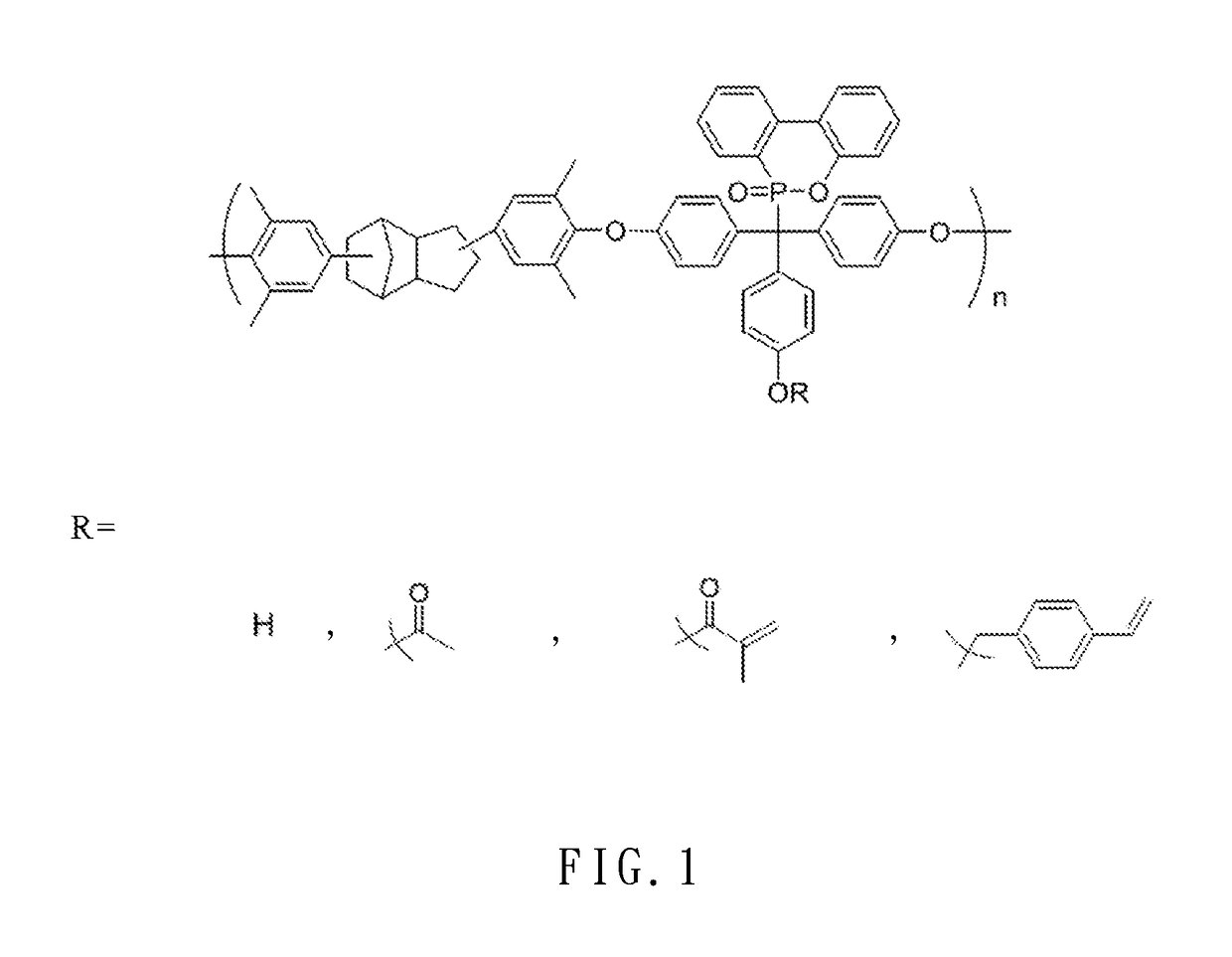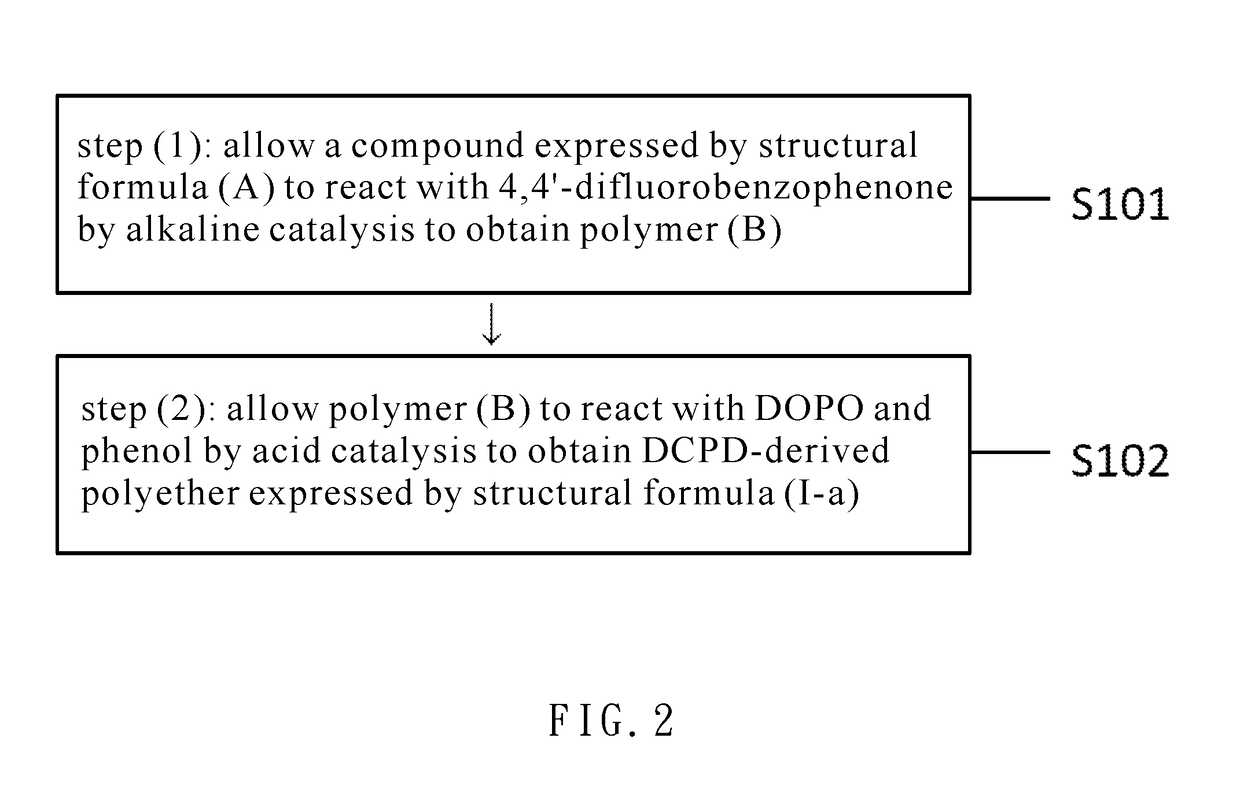Dcpd-derived polyether and method of producing the same
a polyether and derived polyether technology, applied in the direction of printed circuit details, printed circuit aspects, printed circuits, etc., can solve the problems of increasing the restriction of epoxy resin application, aromatic polyethers cannot work without curing agents, and remain unsatisfactory in terms of dielectric constant, etc., to achieve high thermal stability and flame resistance
- Summary
- Abstract
- Description
- Claims
- Application Information
AI Technical Summary
Benefits of technology
Problems solved by technology
Method used
Image
Examples
embodiment
[0043]Embodiment 1: 87.3 g (0.714 mol) of 2,6-dimethyl phenol and 2.0 g (0.015 mol) of AlCl3 were added to a 250 mL three-neck reactor, stirred in a nitrogen atmosphere, and heated to 120° C. Then, 12.32 g (0.100 mol) of dicyclopentadiene (DCPD) was pipetted into the 250 mL three-neck reactor to undergo a reaction for 6 hours. Upon completion of the reaction, 0.060 mol of 5 wt % NaOH (aq) was added to the 250 mL three-neck reactor and stirred for one hour. Afterward, the resultant solution underwent suction filtration, and the resultant filtrate was rinsed thrice with deionized water. The organic layer of the rinsed filtrate was concentrated under reduced pressure to remove a surplus portion of 2,6-dimethyl phenol. Afterward, the product thus preliminarily concentrated under reduced pressure was dissolved in toluene and then extracted several times with deionized water such that the organic layer was concentrated under reduced pressure to remove the toluene and water, thereby obtain...
PUM
| Property | Measurement | Unit |
|---|---|---|
| glass transition temperature | aaaaa | aaaaa |
| dielectric constant | aaaaa | aaaaa |
| diameter | aaaaa | aaaaa |
Abstract
Description
Claims
Application Information
 Login to View More
Login to View More - R&D
- Intellectual Property
- Life Sciences
- Materials
- Tech Scout
- Unparalleled Data Quality
- Higher Quality Content
- 60% Fewer Hallucinations
Browse by: Latest US Patents, China's latest patents, Technical Efficacy Thesaurus, Application Domain, Technology Topic, Popular Technical Reports.
© 2025 PatSnap. All rights reserved.Legal|Privacy policy|Modern Slavery Act Transparency Statement|Sitemap|About US| Contact US: help@patsnap.com



